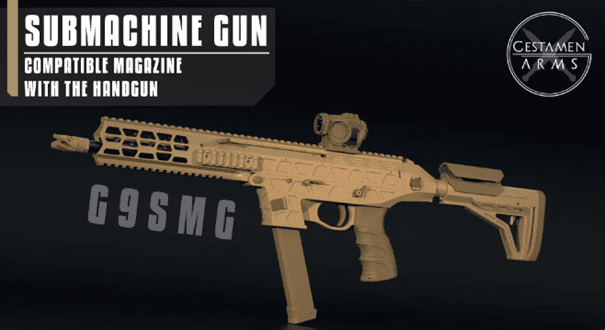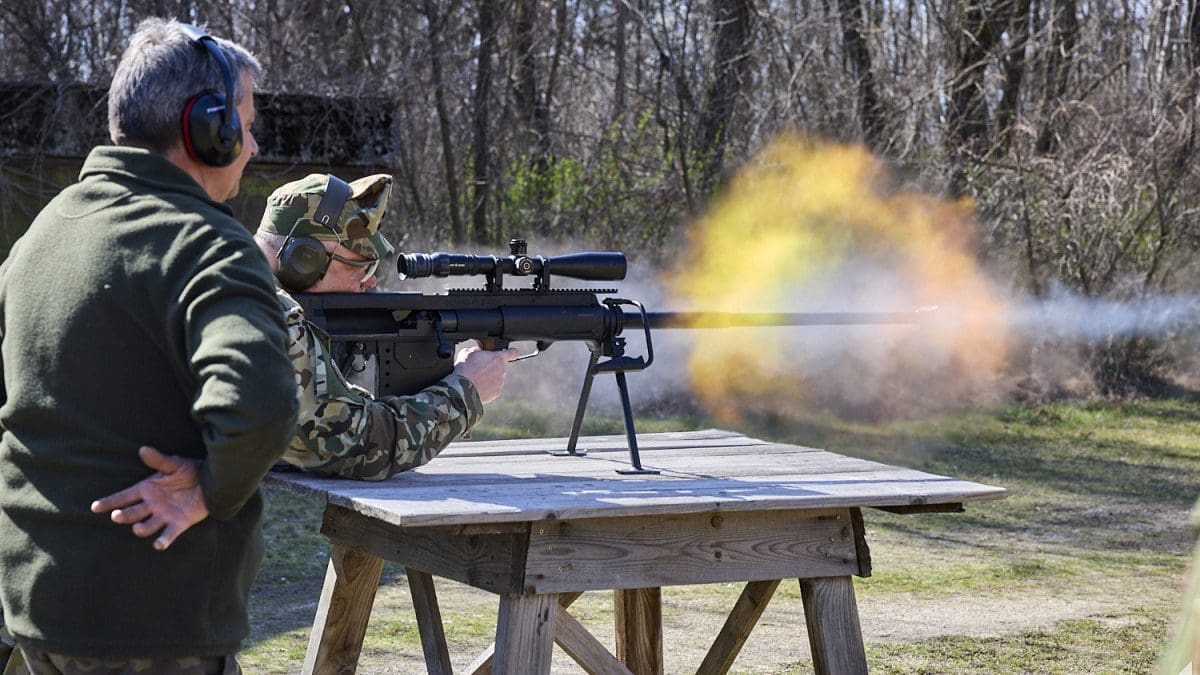The defence industry, and firearms production in particular, was not a priority sector of the Hungarian economy for a long time after the regime change in 1989. Existing capacities were dismantled, specialists were dismissed, and Hungary was losing out to countries in Central Eastern Europe who managed to remain in the growing world market for small arms. The revival of Hungarian arms production had to wait until the mid-2010s to make it possible to put Hungarian weapons into the hands of Hungarian soldiers.
Reviving the National Defence Industry
In 2016, the Hungarian government committed itself to carrying out an overall force development programme to modernise the Hungarian Defence Forces and restructure the defence sector. The Zrínyi 2026 Defence and Force Development Programme was announced with the objective of increasing the size and level of ambition of the Hungarian armed forces, primarily through the procurement of state-of-the-art military technology. In this, Hungary not only intended to rely on foreign suppliers but also aimed to rebuild the country’s once-functioning defence industry.
The Hungarian defence industry was declared a key national economic area as part of the ‘Irinyi Plan’
with the goal of providing Hungarian-made state-art defence equipment for the renewed Hungarian armed forces. A key element of the rebuilding of the national defence industry is the domestic production and development of firearms, not just for the Hungarian Defence Forces (HDF), but for international export too.
‘Hungarian arms into the hands of Hungarians!’—Defence Minister Kristóf Szalay-Bobrovniczky said in Táborfalva in March, where handguns used by the HDF and various protective equipment used by police and military are tested. The minister added that the aim is to have a domestic supplier network with Hungarian-developed weapons, which is of strategic importance for Hungary’s security. Hungarian production and development cover a very wide range of products, from pistols and submachine guns to assault and battle rifles. Moreover, the development of ammunition production capacity has also started in the country.
Firearm Production Facilities in Hungary
The first country to partner with Hungary in the build-up of domestic firearm production was the Czech Republic. In 2018, the Czech arms manufacturer Ceská Zbrojovka Export (CZ) and the Hungarian state signed a technology transfer agreement under which Hungary acquired the licence for certain Colt products (the Czech company fully bought the US Colt brand in 2021). The contract was worth €100 million for a 10-year licence period, with a production capacity of 200,000 firearms.
Since the quantity that can be produced in Hungary is more than the Hungarian market demand (about 100,000), the Czech company agreed to buy back some of the guns. The construction of the production capacity started in the town of Kiskunfélegyháza and the plant was fully operational by 2020. Under the licence, CZ P-07 and CZ P-09 pistols, Scorpion Evo3 A1 submachine guns, and Bren2 machine rifles started to be produced here, which the Hungarian Defence Forces were the first to receive.
‘The Czech-Hungarian agreement was the first major military industrial investment in Hungary after the regime change’
—defence industry expert Balázs Papolczy proclaimed.
With the building up of the Hungarian defence industry, the Hungarian government does not want to only create assembly plants, but has launched research and development projects as well. These programmes will allow the country not only to produce, but also develop weapons. Therefore, in 2019, Gestamen Research and Development Ltd. was established in Csongrád to develop the Hungarian weapon family, with the aim of creating a base for Hungarian military research and development; as well as to lay the foundations of technician training lost over the past thirty years. Gestamen has started to develop small and medium firearms, handguns, submachine guns, grenade launchers, and assault and battle rifles. Prototypes of all of these are already available, and mass-produced pieces are being tested in the HDF. These weapons contain innovations that have been designed and developed in Hungary and are eligible for international patents.

In December 2022, the German-Israeli-owned Dynamit Nobel Defense (DND) signed a joint venture agreement (JV) with the Hungarian state-owned company N7 Holding National Defence Innovation Ltd. Under the agreement, the production of shoulder-fired rocket launchers and reactive armour (ERA) elements will take place in Kiskunfélegyháza. After the start of mass production, shoulder-fired weapons will also be developed by Hungarian experts, and the reactive armour will be used on armoured vehicles produced in Hungary (e.g. Lynxes).
Also, in last December, the Colt CZ Group SE signed another joint venture agreement with the state-owned N7 company, to set up a small arms manufacturing facility in Hungary. The Colt CZ Group will hold 51 per cent of the shares, while the Hungarian government will own 49 per cent. Under the terms of the agreement, the Hungarian side will provide the manufacturing facility, production technologies, and skilled labour; while Colt CZ Group will provide its manufacturing know-how, supply chain, and access to its vast commercial network. The agreement further strengthens the existing cooperation between the Colt CZ Group and the Hungarian government.
‘I would like to extend my gratitude to our Hungarian partners for their continued trust and long-term cooperation, which we are now moving to the next level. The established JV will operate the state-of-the-art facility in which the Hungarian state invested over the past three years. Our common goal is to rearm the Hungarian Armed Forces with modern small arms and to help Hungary build its own production capacity in this field. We are proud that Hungary has chosen our company as a partner for this strategic project’—Jan Drahota, CEO and Chairman of the Board of Directors of Colt CZ Group stated.
On 15 December 2022, the foundation stone of the joint ammunition factory of the German defence company Rheinmetall Waffe Munition GmbH and the Hungarian state was laid in Várpalota. Back in March 2022, the Hungarian government signed an ammunition supply contract worth hundreds of millions of euros with Rheinmetall until 2031, in which the company committed to meet a significant part of its international orders from the production output by the plant to be built in Várpalota.
The plant will initially produce ammunition for the Lynx infantry fighting vehicle, then the Leopard 2A7HU, and finally the PzH 2000HU self-propelled gun. In the second phase, production capacity will be expanded, and the product range will be extended to include other ammunition types. Also in the Defence Industrial Park in Várpalota, Rheinmetall and the Hungarian government started to build one of Europe’s largest ammunition and explosives production plants, on a total of 300 hectares (740 acres). The RDX explosives produced here will supply Rheinmetall’s European factory network, thereby significantly reducing Europe’s current dependence on external suppliers.
Hungarian Firearms in the International Market
As the joint ventures with CZ and Rheinmetall clearly show, with the newfound national defence industrial capabilities, Hungary’s aim is not only to make its army self-sufficient but also to make the country an arms exporter. According to the expert Balázs Papolczy, a handgun factory becomes profitable if it produces between 30,000 and 200,000 guns a year, depending on the type. Since the size of the Hungarian army does not seem to make such a demand possible in the domestic market, therefore, the Hungarian gun manufacturers will have to find new, international markets. This would allow Hungary to compete with regional arms producers including the Czech Republic, Poland, Romania, Serbia, and Bulgaria.
The revival of the Hungarian defence industry and the emergence of Hungarian defence products on international markets can come at an opportune time.
Russia's invasion of Ukraine has caught the European defence industry unprepared, and in its current state, it is unable to adequately replace the stocks that European countries have transferred to Ukraine. Nor do they allow for long-term assistance to Ukraine. To replenish these supplies and continue to support the embattled Eastern European nation, the European defence industry needs to expand. This is reflected in the latest Act in Support of Ammunition Production (ASAP) initiated by the Presidency of the Council of the European Union to urgently mobilise €500 million from the EU budget to support the ramp-up of the manufacturing of ground-to-ground and artillery ammunition, as well as missiles.
It means that in addition to a growing market, the Hungarian defence industry can count on growing EU funding too. Thus, while ensuring its own military equipment supply, Hungary is also contributing to the development of European defence industrial capabilities and is enhancing the EU’s security.







